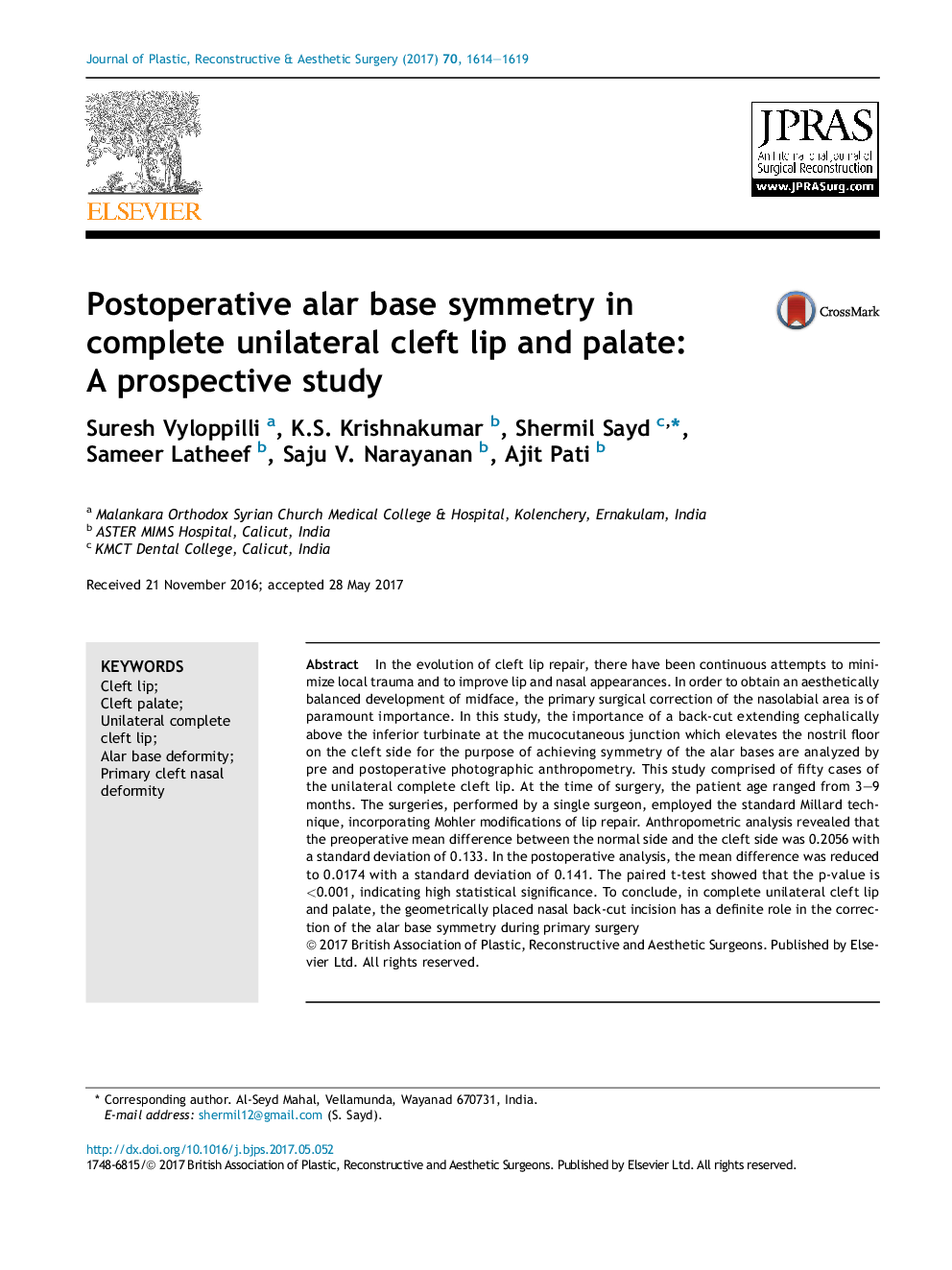| Article ID | Journal | Published Year | Pages | File Type |
|---|---|---|---|---|
| 5715054 | Journal of Plastic, Reconstructive & Aesthetic Surgery | 2017 | 6 Pages |
In the evolution of cleft lip repair, there have been continuous attempts to minimize local trauma and to improve lip and nasal appearances. In order to obtain an aesthetically balanced development of midface, the primary surgical correction of the nasolabial area is of paramount importance. In this study, the importance of a back-cut extending cephalically above the inferior turbinate at the mucocutaneous junction which elevates the nostril floor on the cleft side for the purpose of achieving symmetry of the alar bases are analyzed by pre and postoperative photographic anthropometry. This study comprised of fifty cases of the unilateral complete cleft lip. At the time of surgery, the patient age ranged from 3-9 months. The surgeries, performed by a single surgeon, employed the standard Millard technique, incorporating Mohler modifications of lip repair. Anthropometric analysis revealed that the preoperative mean difference between the normal side and the cleft side was 0.2056 with a standard deviation of 0.133. In the postoperative analysis, the mean difference was reduced to 0.0174 with a standard deviation of 0.141. The paired t-test showed that the p-value is <0.001, indicating high statistical significance. To conclude, in complete unilateral cleft lip and palate, the geometrically placed nasal back-cut incision has a definite role in the correction of the alar base symmetry during primary surgery
